
Away in a Manger
Once in our world, a stable had something in it that was bigger than our world. C.S. Lewis
We all know the song and we all assume that a manger is the one we see on almost all Christmas cards. You know, the picture of snow on the ground with the shepherds and Magi all crowed into a little wooden stable complete with cows, sheep, camels and even a cherub or two. There is a lot going on in this scene that needs unpacking as far as being historically correct but for right now, let’s take a closer look at just the lowly manger.
The definition of a manger is a large open trough to hold feed for livestock. The manger has served as a helpful feeding device for animals for many thousands of years. And, they are still widely used today on farms to feed livestock both in pastures as well as in confined facilities. There have always been only two basic types of mangers. The first was the most inexpensive and thus the one most widely used as it was made out of wood. However, the lowly wooden manger while the most picturesque of the two is somewhat fragile, and depending on the size of the animals and amount of use, can be in need of constant repair. The second type of manger was one carved out of soft limestone. This was more of a commercial grade type as it could withstand use by the largest ox down to the smallest lamb. It could also double as a watering trough. However, because it is carved from rock it is substantially more expensive. But as the old saying goes, you get what you pay for. The stone manger will last indefinitely unless it is cracked and even then, it will still hold dried feed.
Oral tradition states that the Inn at Bethlehem’s proper name was the Geruth- Chimham Inn and was probably the ancestral home of Boaz and later inherited by David a great grandson. Because the home was continually owned by a number of very wealthy heirs, there is little doubt that the inexpensive fragile wooden mangers would have been replaced by the more substantial stone mangers. Any estate manager would have quickly amortized the cost of constant repairs using wood vs. stone and come to the conclusion that a one-time expense on stone mangers is a far better investment of time and money than wooden mangers that would eventually be thrown away. But more to the point, the Inn at Bethlehem had an adjacent stable to house the animals of the travelers. This stable was a shallow cave that was probably man made by simply using a pick ax to remove the soft limestone from a low mound of earth. Justin Martyr, a founding Church father of the early church, wrote circa 150A.D. that it was commonly believed that Jesus was born in a cave. Origen, another founding Church father, also wrote circa 230A.D. that Jesus was born in a cave or grotto.
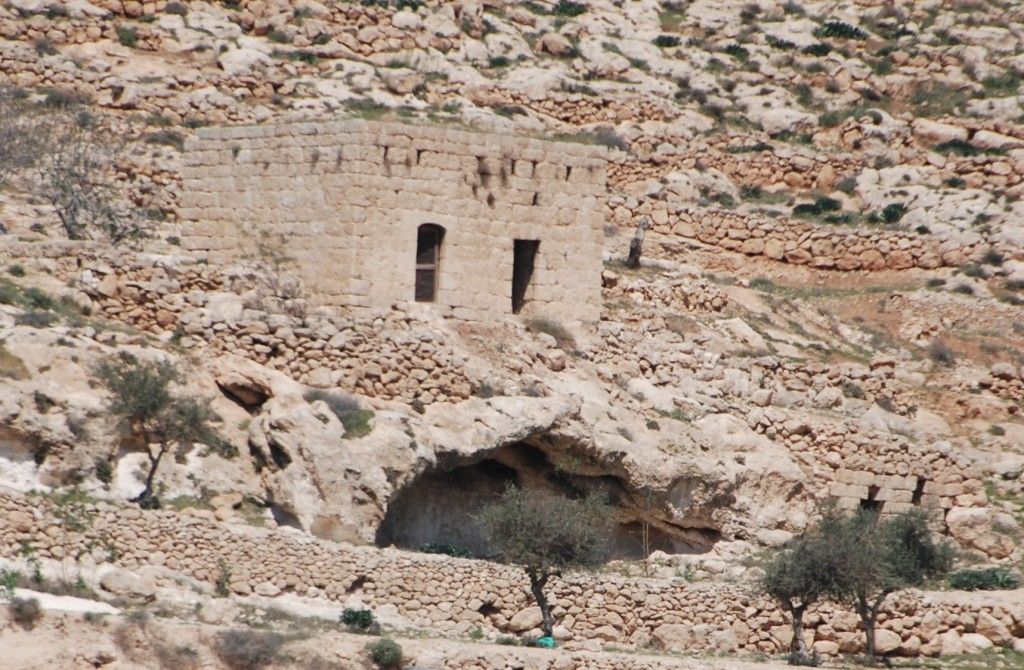
Even today, Israel has many thousands of natural and man-made caves. They have been used as homes, stables and for storage well before the time of Abraham. They provide a way to escape the heat of summer, as well as provide excellent food storage advantages. As a stable, a fenced corral would have been constructed in front of the entrance to the shallow cave with stall dividers of stone or wood located along the interior walls. Since the sides and back walls of the inn’s stable was made of rock, a manger could easily and quickly be made by chiseling a trough in each stall using the existing stone of the cave. And, in an inn setting, stone mangers would have been the most logical choice to feed the constant flow and variety of pack animals that would have accompanied the inn’s patrons.
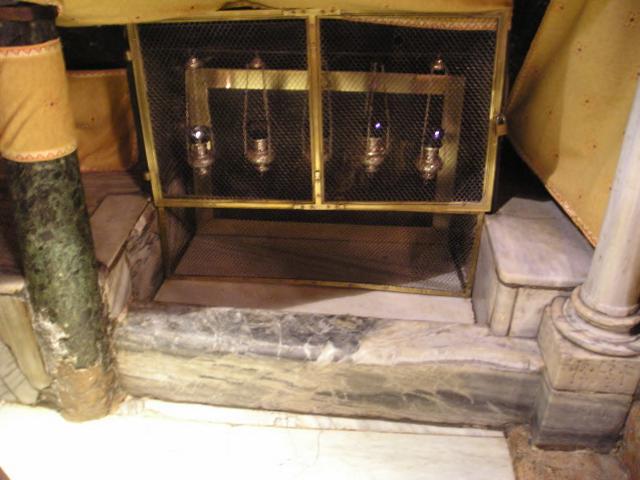
Now here is the most interesting part of this overlooked subject. Most people who have, in modern times, visited Bethlehem to see the site of Jesus’ birth located inside the Church of the Nativity, have probably never noticed that adjacent to the star shaped marker that shows the supposed exact spot where Jesus was born, sits a large unassuming stone manger! Its official location is called the Chapel of the Manger in the Grotto of the Nativity. While there is no way to positively say that this was the actual manger that Jesus was laid in, there is also no evidence that it is not the manger that Jesus was laid in. But it makes perfect logical sense that if Jesus was born in this stable, that he would have indeed been put in this manger as it was the only manger in this stable.
Furthermore, Jerusalem was the home of thousands of the very first believers in Jesus as the Messiah and is located only three miles north of Bethlehem. Bethlehem’s location combined with the possibility that the four Gospels were in circulation before the destruction of Jerusalem in 70A.D. would have very quickly become a site of interest and reverence for both Jewish and gentile followers of Jesus visiting or living in the greater Jerusalem area. It would also have been an attraction for thousands of Jews who would come from throughout the Mediterranean area to attend the seven annual Jewish feasts. There can be no doubt that the sites of Jesus’ birth, ministry and death would be on the must-see list of many Jewish and gentile believers both living in and visiting Israel. Scholars believe that by the end of the first century or 67 years after Jesus’ ascension, there were approximately five million believers in Jesus as the Christ. So, the answer is yes, people were coming to these sites almost immediately after Jesus resurrection and ascension.
We know for certain that there was a manger in the stable of the Inn, before 70A.D. because the Gospel of Luke mentions it three times (Luke 2:7,12,16). We know it remained in the stable for pilgrims to see for the next three hundred years because it was literally carved into the rock of the site. We know that Helena, the Mother of Constantine the Great ruler of the Roman Empire, bought the Inn with its adjoining stable during her visit to Bethlehem between 326 and 328 A.D. She then had her son finance the construction of a church over the cave to protect and venerate the birth place of Jesus to include the site of the manger.
To better understand the birth place of Jesus and the manger, let’s go back to that night and review the facts over the following six months. We now know with great certainty thanks to modern computer drive astronomy software that Jesus was born on June 17th 2B.C. It was on this exact date that a never before seen and visually spectacular triple conjunction of the planets Venus, the planet of love and Jupiter, the planet of power and kings occurred. See related paper, "The Actual Star of Bethlehem Revealed". And as if this was not enough, the star Regulus, or King Star circled atop this conjunction like a halo. The conjunction of the two planets appeared to the naked eye to be the largest brightest star anyone had ever seen (Matthew 2:2).

Just as Joseph and Mary arrive in the village of Bethlehem to comply with a census decree, Mary goes into labor. See related paper, "The Trip to Bethlehem". Joseph sees the Geruth-Chimham Inn also known as the Inn at Bethlehem, as the quickest way to get his wife into a room in order to deliver her first born son Jesus. It was probably not lost on Joseph that the Inn was known as the childhood home of David. Thus, it would be appropriate to have his son, the next king of Judah, to also be born in the same House as David. But there was no room for them due to the crowds who had been forced to return to the chief town of their tribe and be counted in the Roman census. Also, the Inn keeper probably preferred not to subject his cliental with the cries of a young Jewish peasant girl giving birth for the first time in his crowded inn. He instead sends them to the adjacent stable for the birth after which he may have made room for them. This location would be less ideal than a room, but better than in a tent off the side of a road in the Judean wilderness from which they had just come. Mary gives birth with the help of Joseph and possibility a village midwife.
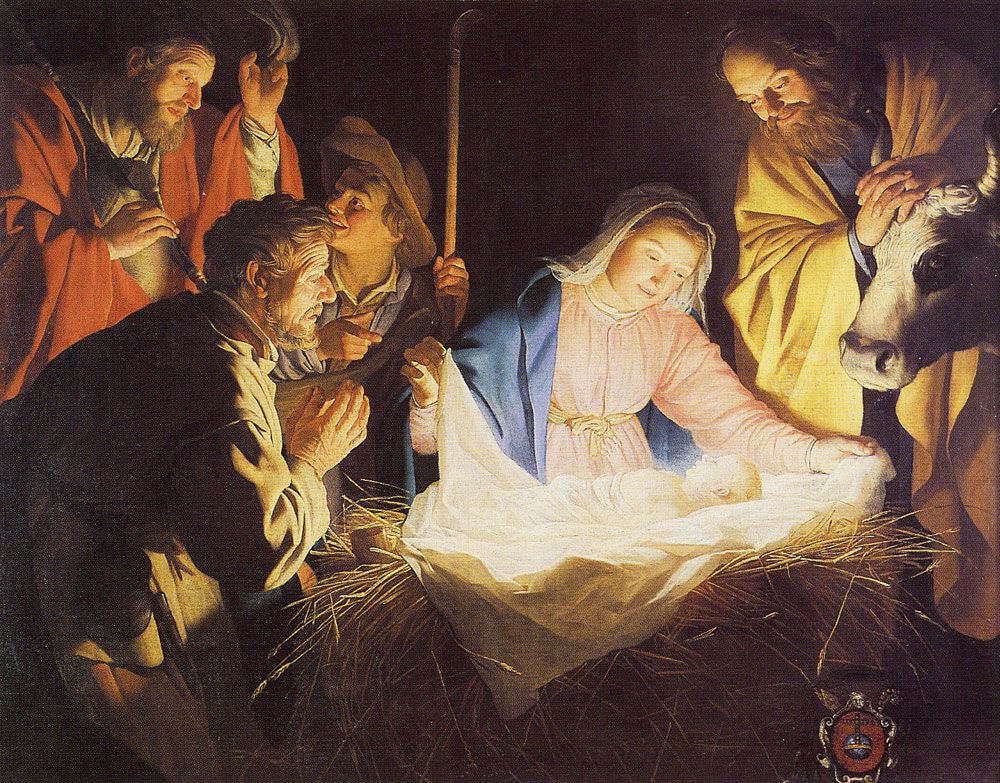
Later that same night, shepherds in the lush green June pasture fields surrounding Bethlehem, are visited by the angel Gabriel who informs them of the birth of the Messiah. They go to see Jesus and meet his parents. The next day, Joseph would have immediately gone throughout the village to locate a room to rent in order to get his wife and new born son out of the stable. Since Joseph was from the tribe of Judah and since Bethlehem was his ancestral tribal capitol, he may have had family ties in Bethlehem. Or, he may have had friends who might have offered him shelter. In any case, we know that the family was definitely staying in a house and that Jesus was now a toddler or 6-month old and not a newborn when the Magi arrived six months later on December 25th, 2B.C. to celebrate His birth (Matthew 2:11). The combination of the prophecy of the Messiah to be born in Bethlehem (Micha 5:2), the brilliant Star overhead in the June night sky, the stories spread by the shepherds concerning the angels announcing Jesus’ birth as the Messiah (Luke 2:17-18) coupled by the arrival of the Magi, all combined to cause a great and somewhat ominous stir with the citizens of Jerusalem (Matthew 2:3-8).
The Magi found the family and presented gifts, but did not report back to King Herod. Several days passed and he realized that his time to murder this newborn King of the Jew was fast slipping away. Herod had been told by the Magi the dates of the three conjunctions of the two wandering stars or planets. They had started eighteen months ago but reached their zenith six months earlier. So he could not be sure if the child was now six months old or eighteen months old. Herod decided that the best solution to the new King of the Jews problem was to err on the side of caution by immediately ordering the murder of all the children under two years of age in Bethlehem and the surrounding areas (Matthew 2:7, 16-18). This would also include his own two-year-old son. Thus, we can unequivocally say that Herod was an equal opportunity homicidal tyrant.
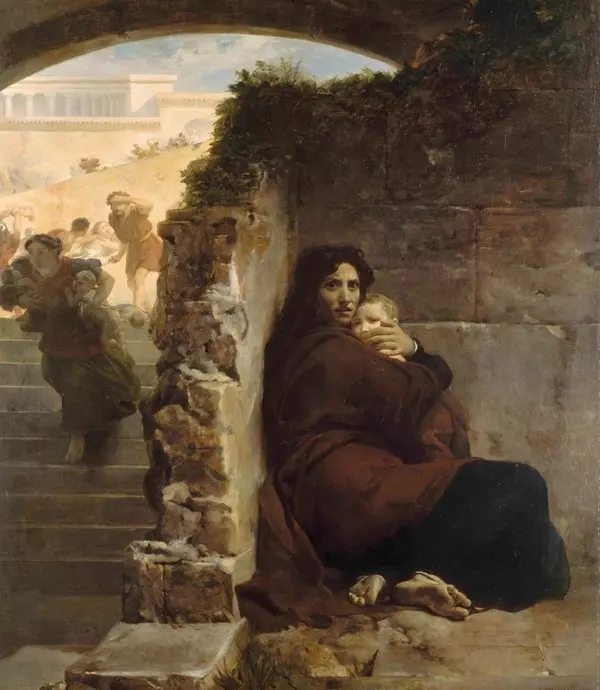
Fortunately, God gave the Magi and Joseph the exact same dream on the exact same night. He told them that Herod was plotting to kill the child. Therefore, the Magi immediately headed east and back to the kingdom of Babylonia from where they had come using less traveled alternate routes from the one they used for their grand arrival. Joseph immediately packed up his family and took a back trail sixty-five miles due south to the Egyptian border. Herod ordered the murder of the children only a few days after the Magi had met with the family. This would have been in late December of 2 B.C.
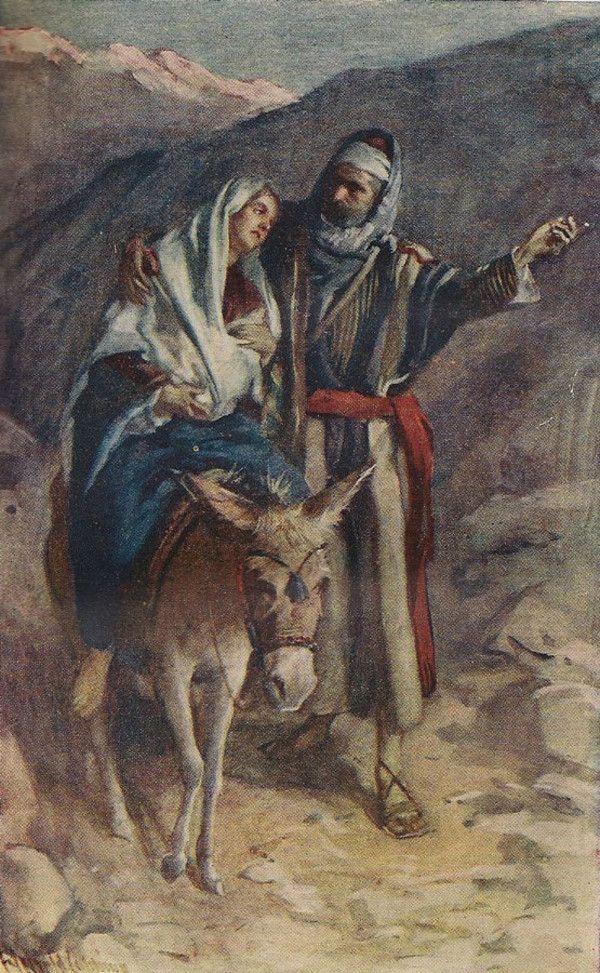
Herod died December 29th 1B.C. during an eclipse of the moon. The citing of his death during a lunar eclipse was made by the famous Jewish historian Flavius Josephus (Josephus Antiquities 17.6.4). However, here were two eclipses in 1B.C. The first occurred on January 10th 1B.C. and the second on December 29th 1B.C. Since we know that Jesus was born June 17th 2 B.C. and the Magi arrived six months later on December 25th 2 B.C., then it would seem reasonable to conclude that Herod did not die two weeks later in January of 1 B.C. after he murdered the children of Bethlehem in December. But instead, he lived an entire year in what was described by historians as sheer physical and mental agony before he died December 29th 1 B.C.
Scripture states that when Herod died, they took his body to prepare it for burial. However, as they were moving him, his stomach is said to have split open and a mass of parasitic worms poured out (Acts 12:21-23; Josephus Antiquities 19.8.2). Modern medical science as deduced from ancient records that Herod the Great suffered mentally from paranoid schizophrenia. This was complicated from a variety of physical conditions that began with a case of gonorrhea that he probably contracted from one of his ten wives. This initial disease caused gangrene of the genitals which spread to his intestines. The dead tissue produced from this condition caused his groin and intestines to become infested by maggots. He is also said to have had worms in his abdomen. He was in constant agony the last year of his life and ultimately died of chronic kidney failure (ABC News, January 7th, 2006). His death in December of 1B.C., would have coincided with the one-year anniversary of his order to murder the children of Bethlehem.
With the visit of the Magi and the subsequent murder of what scholars consider to have been several dozen babies, the population of Bethlehem and all Jerusalem were now convinced that something major was happening. But the full impact of Jesus birth was yet to be revealed. Still, the religious leaders and local residents would remember the time of the Star and especially the date the Magi arrived looking for a newborn King of the Jews. They would also well remember the mass killing of the children of Bethlehem.
We now fast forward to Friday, April 3rd 33A.D. and the crucifixion of Jesus. He arises from His tomb early Sunday morning April 5th, the first day of creation and the Feast of First Fruits (Genesis 1:3; Leviticus 23:1-2,9-14). With the resurrection of Jesus, the Christian religion begins to grow rapidly. By the end of the first century, the four Gospels and the letters of Paul are in wide circulation. Again, it is estimated that there were now as many as five million Christians throughout the Roman empire. This would have been the time when followers, especially in the land of Judea, would have begun to travel and worship at what they considered the two holiest sites in all of Christendom, the birth place and the crucifixion and burial sites of Jesus. This in turn would mean that the stable with its manger would have been a must see place for the pilgrims to visit and worship.
In 313 A.D., Constantine was the emperor of Roman Empire and had designated Christianity as a legitimate religion. Then in 323 A.D., he declared it the official religion of the Empire. He established his capitol and headquarters in the city of Constantinople. It was then that his mother Helena, a devout Christian, requested that she be allowed to personally travel to Judea to determine the locations of several major Christian holy sites. Constantine agreed to fund the construction of churches to be built over these sites. See related paper, "How Sacred Sites were Discovered". We know that by this time, the stable with its manger and a number of other sites related to the ministry of Jesus were well established pilgrimage sites. Therefore, by 326 A.D. when Helena made her two-year tour of Judea to locate and purchase the holy sites located in Bethlehem, Nazareth and Jerusalem, these sites were immediately shown to her by local church leaders. They could personally authenticate with absolute certainty that these were in fact the actual sites where major events took place. They could do this because over the past 256 years, the locations of these sites were not only passed down from generation to generation but they had been continuously venerated by followers of Jesus since his resurrection. And, because the destruction of Jerusalem by Rome in 70A.D. was so thorough, the sites had been literally frozen in time with little or no new construction to disturb these locations.
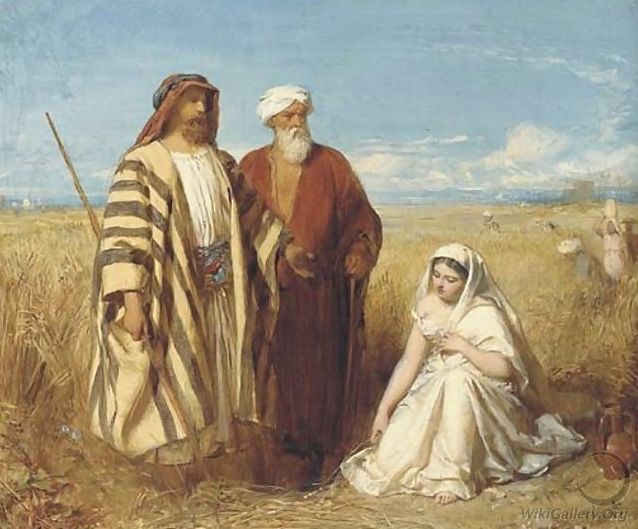
As mentioned earlier, oral tradition stated that the stable was a part of the estate of Boaz and Ruth, a very wealthy couple of Bethlehem (Ruth 2:1). Nahshon was the tribal leader of Judah during the Exodus. He had a son named Salmon who married Rahab and appointed the ancient village of Bethlehem as the capitol of the tribal territory of Judah. Rahab was a gentile inn keeper from the city of Jericho who after the fall of Jericho, became a believer in the one true Creator God of Salmon. They had a son named Boaz who also married a gentile named Ruth. She had arrived in Bethlehem with her widowed mother-in-law Naomi who was originally a land owner in Bethlehem. However, her husband sold the land in order to move to the land of Moab to make a better living for his family. By marrying Ruth a gentile Moabite, Boaz went against Jewish tradition. But by doing so, he saved the life of a poor destitute gentile woman while at the same time redeeming Naomi’s land in Judea. The story of Boaz is literally, figuratively and prophetically about the literal Jewish Messiah sacrificing Himself in order to bring salvation to the Jews and Gentiles of the world. Upon the Second Coming of Christ, the Jews will regain their homeland and finally live in peace which is a direct parallel of Naomi regaining her land and living out her life in peace. Remarkably, when the Jews pray for the Peace of Jerusalem, they are unknowingly praying for the return of Christ.
The estate of Boaz would have, upon his death, been left to Ruth his widow by way of their first-born son named Obed. Upon his death, the estate would have been left to his son Jesse the father of King David. We know that David had the legal rights to the estate as both a rightful heir and as King of Judah. We can reasonably assume based on oral tradition and scriptural support that he eventually gave the home as a gift to Chimham the son of Barzilla. He did this as a repayment for the generous support Barzilla had given to him when he suddenly found himself in the fight of his life. His son Absalom had led a coup that forced him to flee into the country side. There he found that some of his subjects were willing to help him but many refused his pleas for support (II Samuel 17:27-29; II Samuel 19:34-40). This would explain how the name of the ancestral home of David by the first century had come to be known as the Geruth-Chimham Inn at Bethlehem.
In summation, we know that a stone manger would be much more in keeping with the incredible wealth of these past estate owners. We know that by 70A.D. the gospels had probably been written, published and circulated. We know that Jesus had tens of thousands of followers at His death and an estimated five million followers by the end of the first century. We can reasonably assume that believers were making pilgrimages to the stable and crucifixion sites well before the end of the first century. There can be no reason why the large stone manger cited in the Gospel of Luke, would not have been located in the cave where it is found today (Luke 2:7,12,16). We know that Helena purchased the stable including the manger between 326 B.C. and 328 B.C. She then encapsulated the site with the Church of the Nativity. And today, that same stone manger remains in the Church. This lowly stone object which was once seen as only a worthless trough from which to feed animals, is today looked upon in wonder and reverence. It is considered a priceless physical touchstone to the past. A reminder of the first place that the “little Lord Jesus laid down His sweet head”.
On a final note, it is no coincidence that this carved limestone manger that literally served as the first place that Jesus rested as a newborn, is prophetically identical to a second shallow carved limestone shelf that served as the resting place of Jesus’ body in the tomb. Fascinating!
Related Papers:
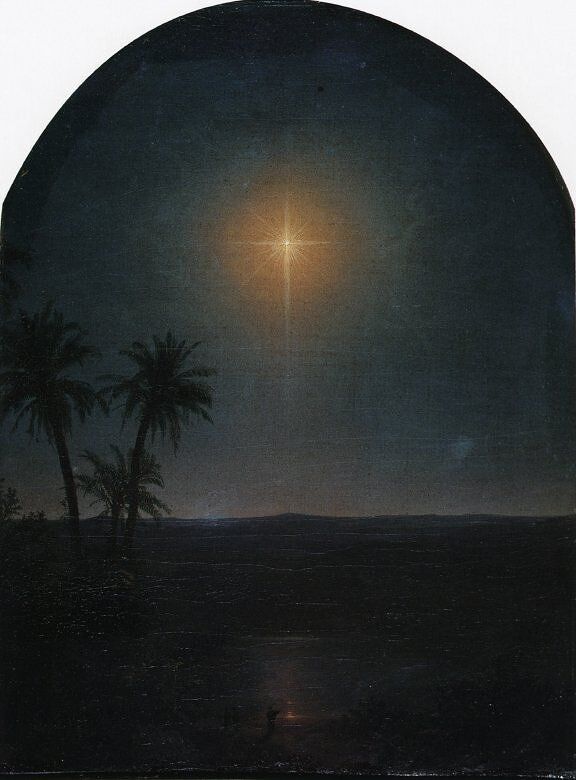

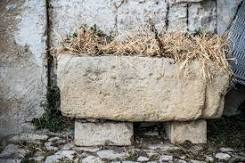
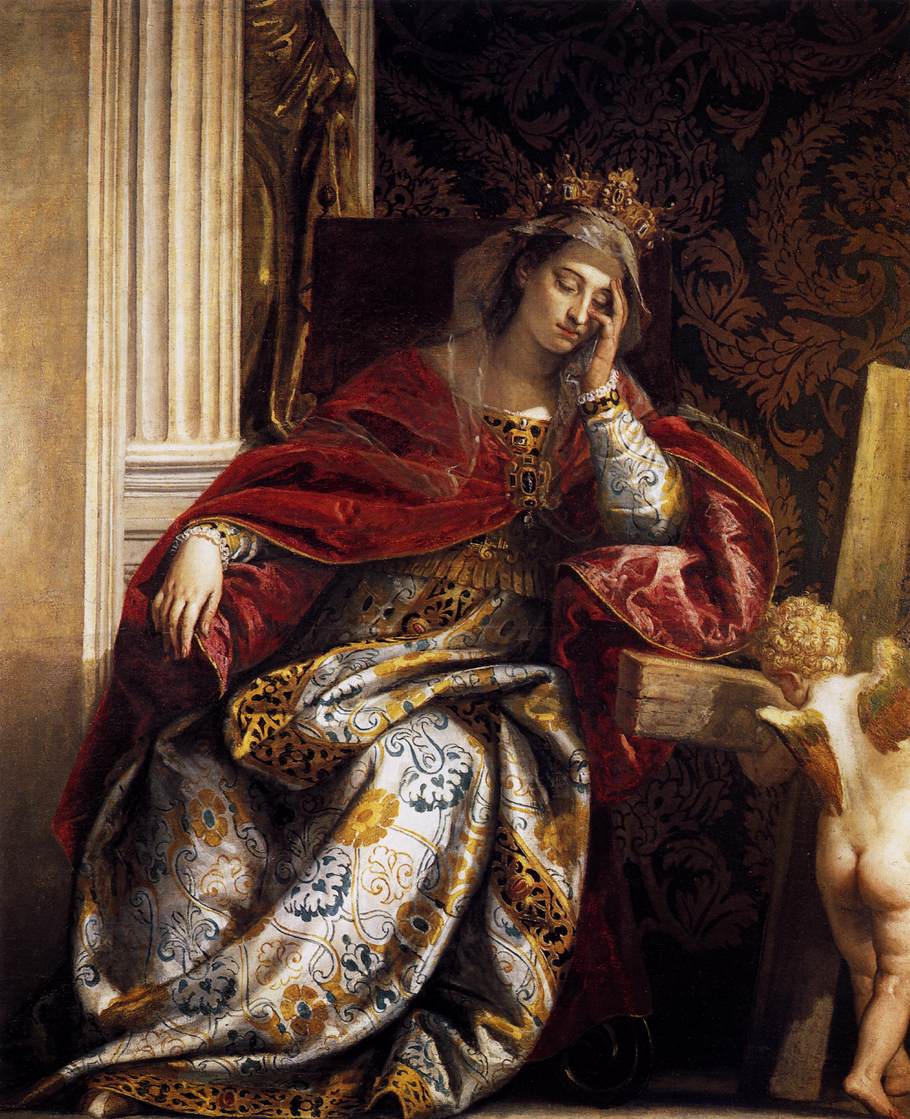
If you enjoy the information provided on this site, please consider making a donation of any amount to help continue its production. Donate Now
